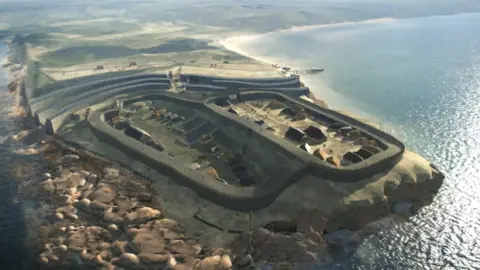Picts' exotic origins a myth, say researchers
 Getty Images
Getty ImagesResearchers have provided new insights into Scotland's mysterious Picts.
The people, known for creating ornately carved symbol stones, left little written material of their own to offer clues on their lives and history.
Since Medieval times, some writers have claimed the Picts were migrants with "exotic origins".
But the first extensive analysis of Pictish genomes has found the Picts belonged to regions of the British Isles.
The researchers said the DNA results also suggested present-day people from western Scotland, Wales, Northern Ireland and Northumbria have genetic links to mainland Picts.
There is also a suggestion of significant Pictish genetic continuity in Orkney over the last 2,000 years.
Bioarchaeologists at the University of Aberdeen and Liverpool John Moores University (LJMU) carried out the study.
They compared Pictish genomes sequenced from individuals excavated from Pictish-era cemeteries at Lundin Links in Fife and Balintore in Easter Ross to those of previously published ancient genomes, as well as the modern population.
The research team said the Picts were one of the most mysterious of Britain's ancient peoples, but added it was myth they originated from Thrace north of the Aegean Sea, or Scythia in eastern Europe, as suggested by medieval writers.
Dr Adeline Morez, a visiting lecturer at LJMU said: "Our findings support the idea of regional continuity between the Late Iron Age and early medieval periods and indicate that the Picts were local to the British Isles in their origin, as their gene pool is drawn from the older Iron Age, and not from large-scale migration, from exotic locations far to the east."
 University of Aberdeen/Dundee
University of Aberdeen/DundeeRoman invaders encountered the Picts about 1,700 years ago, and the term "Picti" was likely to have been a nickname the Romans used to describe communities north of Hadrian's Wall.
The Picts created intricately decorated standing stones and also constructed impressive hill forts to defend themselves against rival tribes and invaders.
They battled against the Romans, Angles and the Vikings.
The Picts lived in north and north east Scotland, including what are the Highlands and Aberdeenshire today, before the kingdoms of Alba and Scotland.
